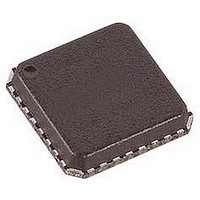ADAU1381BCPZ Analog Devices Inc, ADAU1381BCPZ Datasheet - Page 30

ADAU1381BCPZ
Manufacturer Part Number
ADAU1381BCPZ
Description
IC AUDIO CODEC STEREO LN 32LFCSP
Manufacturer
Analog Devices Inc
Type
Stereo Audior
Datasheet
1.ADAU1381BCBZ-RL.pdf
(84 pages)
Specifications of ADAU1381BCPZ
Data Interface
Serial, SPI™
Resolution (bits)
24 b
Number Of Adcs / Dacs
2 / 2
Sigma Delta
No
S/n Ratio, Adcs / Dacs (db) Typ
97 / 100
Dynamic Range, Adcs / Dacs (db) Typ
96.5 / 100
Voltage - Supply, Analog
1.8 V ~ 3.65 V
Voltage - Supply, Digital
1.63 V ~ 3.65 V
Operating Temperature
-25°C ~ 85°C
Mounting Type
Surface Mount
Package / Case
32-VFQFN, CSP Exposed Pad
Audio Codec Type
Stereo
No. Of Adcs
2
No. Of Dacs
2
No. Of Input Channels
3
No. Of Output Channels
3
Adc / Dac Resolution
24bit
Adcs / Dacs Signal To Noise Ratio
100dB
Lead Free Status / RoHS Status
Lead free / RoHS Compliant
ADAU1381
RECORD SIGNAL PATH
INPUT SIGNAL PATH
The ADAU1381 can be configured for three types of microphone
inputs: single-ended, differential, or digital. The LMIC/LMICN/
MICD1 and RMIC/RMICN/MICD2 pins encompass all of these
configurations. LMICP and RMICP are used only during
differential configurations (see Figure 31, the record signal path
diagram).
Each analog input has individual gain controls (boost or cut). These
signals are routed to their respective right or left channel ADC.
Analog Microphone Inputs
For differential inputs, RMICN and RMICP denote the negative
and positive input for the right channel, respectively. LMICN
and LMICP denote the negative and positive input for the left
channel, respectively.
LMIC and RMIC inputs are single-ended line inputs. Together,
they can be used as a stereo single-ended input.
Digital Microphone Inputs
When a digital PDM microphone connected to the MICD1 or
MICD2 pin is used, Register 16392 (0x4008), digital microphone
and analog beep control, must be set appropriately to enable the
microphone input of choice. The MCKO output clock provides
the clock for the microphone and must be set accordingly in
Register 16384 (0x4000), clock control, depending on the
streaming PDM rate of the microphone.
The digital microphone signal bypasses the ADCs and is routed
directly into the decimation filters. The digital microphone and
ADCs share these decimation filters; therefore, both cannot be
used simultaneously.
RMIC/RMICN/
LMIC/LMICN/
RMICP
MICD1
LMICP
MICD2
BEEP
Figure 31. Record Signal Path Diagram
CM
CM
PGA
PGA
PGA
RIGHT
LEFT
ADC
ADC
DECIMATORS
Rev. B | Page 30 of 84
Analog Beep Input
The BEEP pin is used for mono single-ended signals, such as a
beep warning. This signal bypasses the ADCs and the sound
engine and is mixed directly into any of the analog outputs.
A BEEP pin input ca
to 32 dB in Register 16392 (0x4008), digital microphone and an
beep control. The beep input must be enabled in Register 16
(0x4010), microphone bias control and beep enable.
Microphone Bias
The MICBIAS pin provides a voltage reference for electret
microphones. Register 16400 (0x4010), microphone bias
control and beep enable, sets the operation mode of this pin.
Example Configurations
Figure 32. Stereo Digital Microphone Input Configuration
RMIC/RMICN/
RMIC/RMICN/
LMIC/LMICN/
LMIC/LMICN/
Figure 33. Single-Ended Input Configuration
RMICP
MICD1
LMICP
MICD2
RMICP
MICD1
LMICP
MICD2
n also be amplified or muted by a PGA, up
CM
CM
CM
CM
TO DECIMATORS
TO DECIMATORS
PGA
PGA
PGA
PGA
TO LEFT
ADC
TO RIGHT
ADC
400
alog












